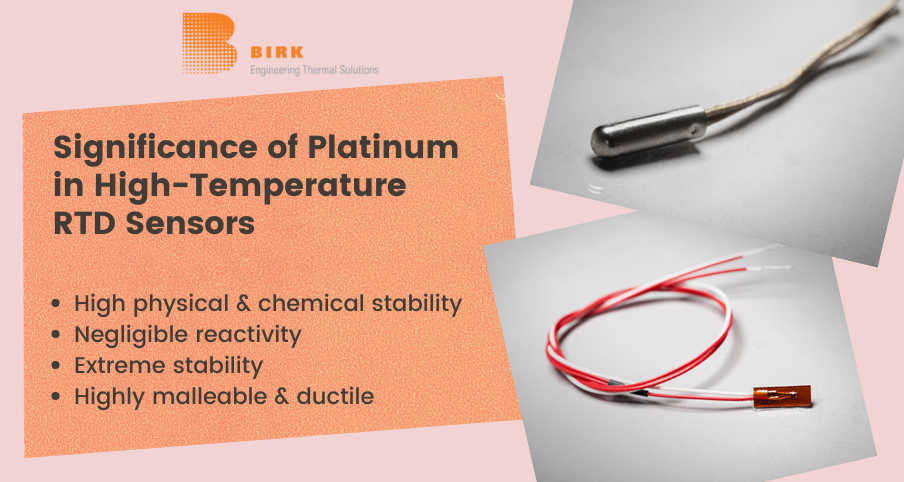Enter any two known values and press calculate to solve for the others.
Resistance temperature detectors (RTDs) are one of the more popular temperature sensors, and are also known as resistance thermometers. These temperature sensors work on the principle of resistance-temperature interrelation. The RTDs feature a pure metal wire, which may be copper, nickel, or platinum, wrapped around a ceramic or glass core. However, platinum is the preferred material for the temperature probes and surface mount RTD sensors. It is essential to understand what makes platinum a popular choice in these sensors. This post discusses the factors that contribute to the construction and performance of temperature sensor probes and surface mount RTDs.
Platinum (Pt) is a highly demanded metal in industries such as jewelry making, electrical, and medical. The silver-like lustrous metal is a superior material and is known for its negligible reactivity with surrounding factors. The following physical and chemical properties of platinum play an essential role in its suitability for the construction of RTDs.

Platinum is an important component of high-temperature RTD sensors for the following reasons:
All the factors mentioned throughout this blog contribute to the significance of platinum in RTDs.
These benefits prove vital in the construction of temperature probes and surface mount RTDs. Birk Manufacturing, Inc. is a prominent RTD sensor manufacturer and an ITAR, ISO 13485:2016, AS9001 Rev D, and CSA & UL certified organization. The quality and performance of its temperature sensors are relied on throughout multiple industries, including no-fail applications. Along with temperature probes and surface mount RTD sensors, the company offer high-quality thermal solutions and flexible heating elements used in various mission-critical applications.